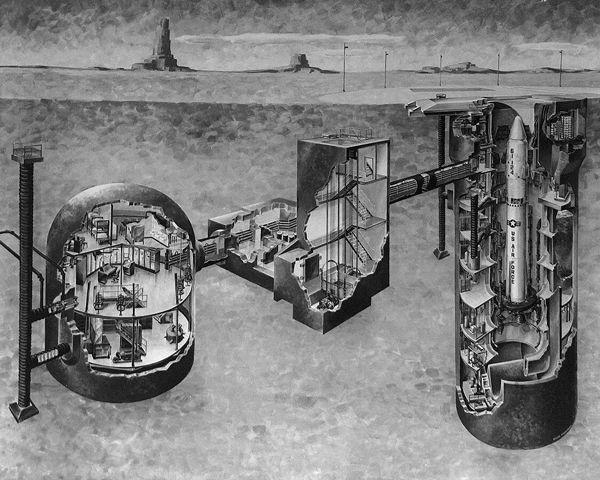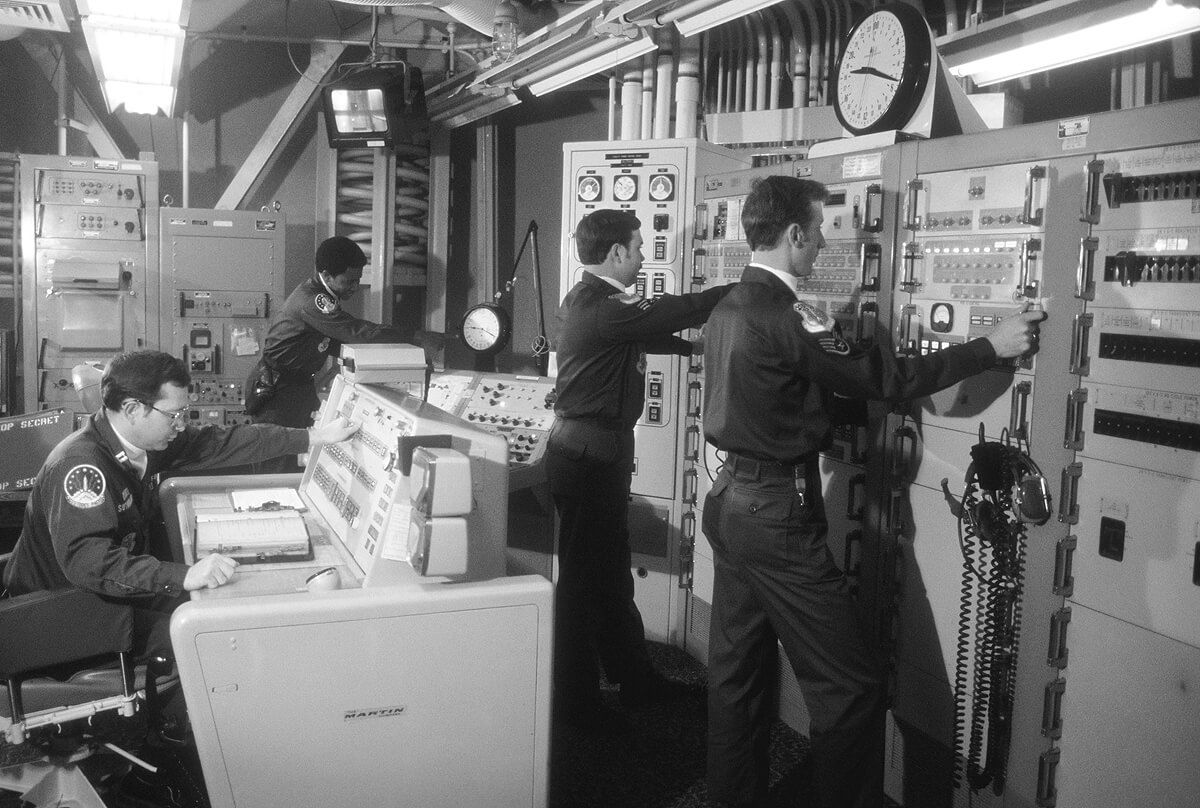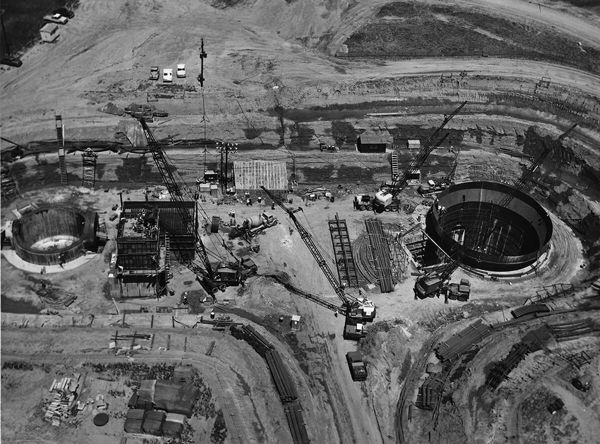System Online: We highly recommend reserving your tour online. Walk-ins welcome, but space is limited.
Titan II History
Titan Program History
The Martin Company first proposed the development of the Titan II in 1958, and the Air Force approved the program in October of 1959. Construction of the launch complexes began in December of 1960. The first missile was installed in December of 1962, and the first unit was turned over to the Strategic Air Command (SAC) on March 31, 1963.
Four important changes distinguished the Titan II from its predecessors, the Atlas F and the Titan I. First, the Titan II used nitrogen tetroxide (oxidizer) and unsymmetrical dimethyl hydrazine (fuel) as its propellants. These liquids are hypergolic, meaning that they do not ignite until contact. This increased the reliability of the Titan II, both at liftoff and when the Stage II engine ignited at high altitude. Second, nitrogen tetroxide is noncryogenic so that both propellants could be stored on board the missile for indefinite periods of time. Third, the Titan II would also launch from its underground silo, reducing the launch time of the missile to just under a minute. Finally, the Titan II utilized an all-inertial guidance system, increasing its accuracy over the Titan I.
Carrying the largest nuclear warhead ever deployed on an ICBM by the United States, and with a range of 5,500 miles, the Titan II was the ultimate liquid-propellant ICBM.


Fifty-four Titan II ICBMs were deployed in groups of eighteen around three Air Force Bases, with the first units coming on alert in early 1963. All fifty-four missiles were on alert by December of that year. Davis-Monthan AFB, Arizona hosted the 390th Strategic Missile Wing (SMW) which was comprised of the 570th and 571st Strategic Missile Squadrons (SMS). Little Rock AFB, Arkansas hosted the 308th SMW which was comprised of the 373rd SMS and 374th SMS. And McConnell AFB, Kansas hosted the 381st SMW which was comprised of the 532nd SMS and 533rd SMS.
Classified as combat duty, Titan II crew duty was only open to men when the system became operational in 1963. This all changed in 1978 when the Air Force opened the Titan II career field to women. First Lieutenant Patricia M. Fornes was the first woman to pull a Titan II alert on September 16, 1978.
Originally designed for a ten-year deployment, the Titan II program was extended by a series of modifications and upgrades. One such modification replaced the all-inertial guidance system with the Universal Space Guidance System (USGS) developed by MIT and Delco Electronics. In the end, the Titan II more than doubled its planned deployment. But in October of 1981, President Reagan announced the start of his Strategic Forces Improvement Program. As part of this program, the land based ICBM programs would be modernized, and the Titan II was identified for deactivation to make way for more advanced systems such as the MX Peacekeeper. Deactivation of the Titan II began in 1982 at the 390th SMW. The 381st SMW followed, and finally, in 1987, twenty-four years after its initial deployment, the Titan II program came to an end when the 308th SMW was deactivated.

Titan II Specs
From liftoff to target, the flight time was 30 minutes. Only 5.5 minutes of that was powered flight. The other 24.5 minutes was ballistic free flight.
Each site consisted of a missile silo, a launch control facility, and an access portal. The sites were staffed 24 hours per day, 365 days per year, by 4-person missile combat crews who deployed to the missile sites for 24-hour shifts, called alerts.
Each crew pulled an average of 8 to 9 alerts a month, meaning they often worked the equivalent of 5 weeks in a 4-week month. Crew members consisted of two officers — the Missile Combat Crew Commander (MCCC) and the Deputy Missile Combat Crew Commander (DMCCC), and two enlisted personnel — the Ballistic Missile Analyst Technician (BMAT) and the Missile Facilities Technician (MFT).
Titan II Specs
Length | 103 feet |
Width | 10 feet in diameter |
Weight at liftoff | 330,000 pounds |
Warhead | W-53 |
Yield | 9 Megatons |
Launch sequence (initiation to liftoff) | 58 seconds |
Time to target (liftoff to detonation) | 25 to 30 minutes |
Range | 6,000 miles |
Velocity | 16,000 mph |
Underground Launch Duct | 146 feet deep, 26 feet in diameter |
Cost to build (1963 dollars) | $8.3 million for each missile site |
Annual Operating Cost | $1.964 million per missile site |